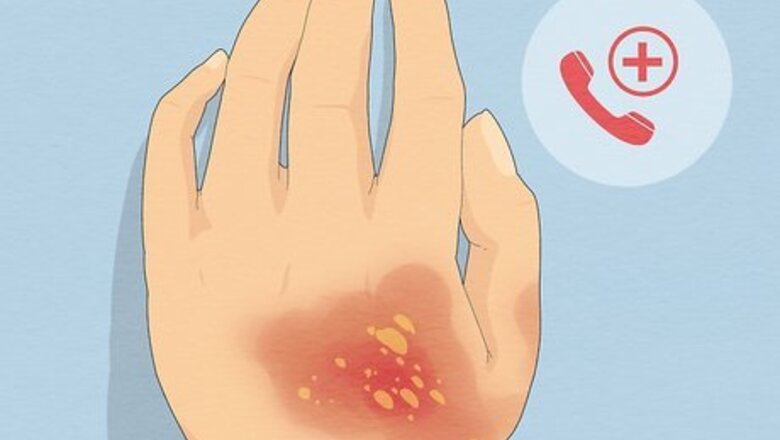
views
- If you have symptoms of a serious burn or scald, such as blisters, white or brown skin discoloration, or numbness, seek medical attention.
- Treat minor scalds at home by rinsing them under cool water and covering them with a dry, non-stick bandage.
- Take steps to prevent scalds and spills by keeping hot drinks in closed containers and turning cookware handles away from the stove edge when you’re cooking.
Getting Medical Care
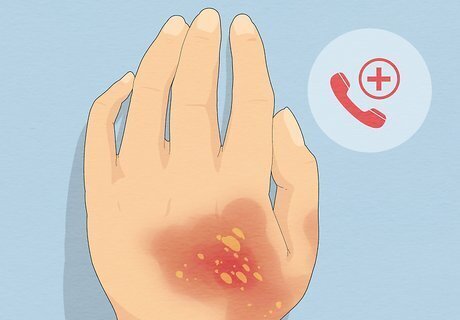
Call your doctor if blisters develop. A hot water scald can sometimes cause second-degree burns, which are painful burns that damage the top 2 layers of your skin. A second-degree burn typically causes blisters to form. If this happens, call your doctor’s office and ask for advice. They may want to examine the burn to determine if it needs treatment. If you notice blisters at the burn site, leave them alone. Your doctor can safely drain the blisters for you if they think it’s necessary.
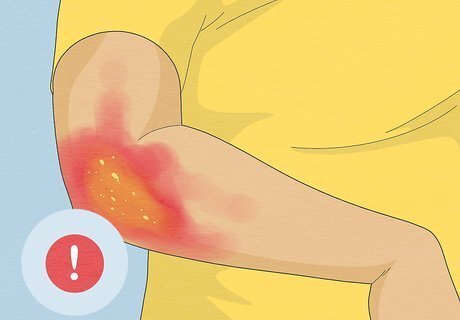
Go to the emergency room for scalds on your face, hands, feet, or genitals. Burns and blisters in these sensitive parts of the body can be serious and need to be treated right away. If you burn one of these areas with hot water, go to the emergency room or call emergency services. Burns that are located directly over major joints (such as a knee or elbow) or that wrap all the way around your limb also need emergency treatment.
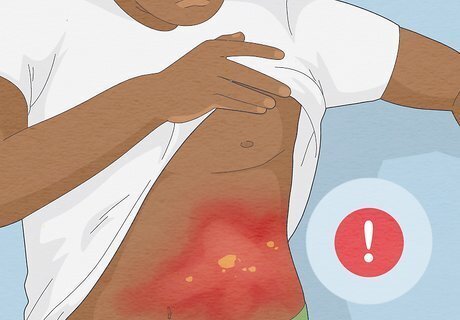
Get immediate medical care for burns larger than your hand. Burns that cover a large area of your body are a medical emergency, especially if they cause blisters or penetrate deep into your skin. If you have a hot-water burn that covers an area the size of your hand or bigger, call emergency services or go to the emergency room. Some medical experts recommend getting medical care for any burn larger than about the size of a quarter.

Seek emergency care for deep burns. Burns that penetrate deep into your skin and the layers beneath are called third-degree burns. These burns are very dangerous and should be treated immediately, even if they aren’t large or painful. Get emergency medical care if you notice third-degree burn symptoms such as: Black, white, brown, or yellowish discoloration of the skin at the burn site Open skin in the burned area Dry and leathery skin at the burn site Numbness or lack of pain in the burned area (due to nerve damage)
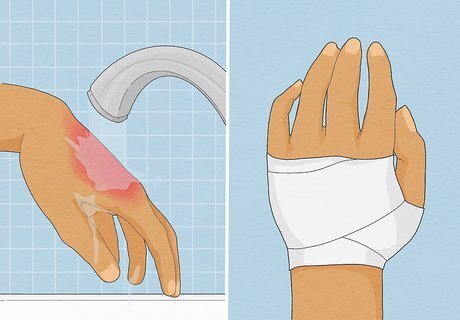
Apply first aid while you’re waiting for help. If you think your hot water scald is severe, get away from the heat source immediately, then call emergency services. While you’re waiting for help: Remove any clothing or jewelry from the scalded area unless it is sticking to your skin. Rinse the burn under cool or lukewarm water for 20-30 minutes. Cover the burn with a dry, clean bandage or a layer of cling film. Lie down and elevate the burned area above the level of your heart to prevent swelling. Cover yourself in a warm blanket, but avoid any pressure or friction on the scalded area.
Treating a Minor Burn
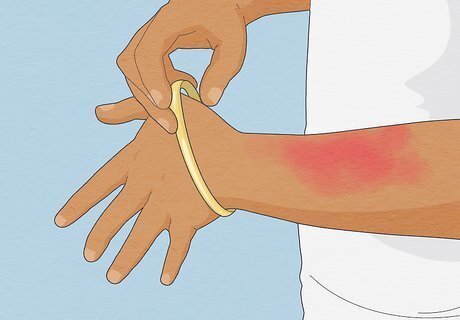
Remove any clothing over the scalded area. As soon as you spill hot water on your skin, get away from the heat source and remove any clothing, jewelry, or other items on or near the area. This will help prevent the burn from getting any worse. If anything is sticking to the burn, don’t try to remove it. It could cause more damage to the scalded skin. Instead, leave it there and seek medical attention.
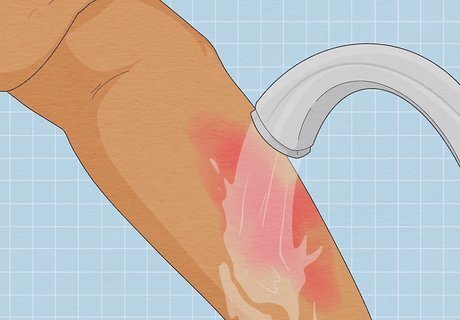
Clean and cool the burn with cool water. If the scald is minor, you can take care of it at home. Once you’ve removed anything covering the burn, run cool water over it from the tap or soak it in a bath of cool (but not ice-cold) water. Soak or rinse the burn for 5-30 minutes. This will both clean the area and cool the burn to help prevent further damage. Don’t use hot or ice-cold water, since either one can irritate the burned skin and make the damage worse. You can also gently lay a cold, wet towel or washcloth on top of the burn to cool it and reduce pain.
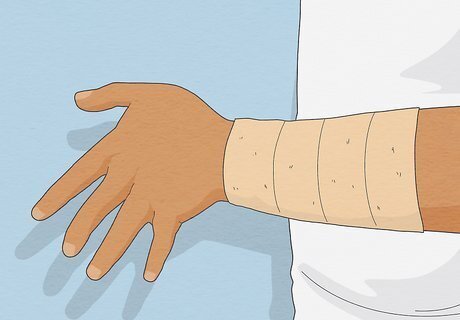
Cover the burn with a clean, dry bandage. Once the burn has had a chance to cool, gently pat it dry with a clean towel and cover it with a sterile bandage to protect it. Choose a non-stick bandage that won’t irritate the damaged skin. If you don’t have a bandage, wrap the scald in cling film. Don’t put on any ointments or lotions at this point. Change the dressing once a day or any time it gets wet or dirty. Gently wash the burn with cool or lukewarm water and mild soap whenever you change it.

Treat the pain with over-the-counter medications. Any minor burn you experience will likely cause pain. To help with any lingering pain, take over-the-counter pain medications, such as acetaminophen (Tylenol) or ibuprofen (Advil and Motrin). Take the medications as often as instructed on the package or by your doctor. If you’re treating a scald on a child or teen, avoid any painkillers that contain aspirin. Aspirin can cause a rare but life-threatening reaction in some people under the age of 16.
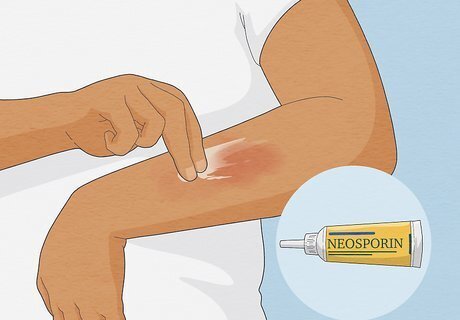
Apply a moisturizing ointment once the burn has cooled. After the scald has had a day or so to cool and begin to heal, it’s okay to apply a gentle moisturizing lotion. Choose a burn treatment product containing aloe or a gentle antibiotic ointment.

Avoid harmful home remedies, like butter, oil, or ice. Some home treatments can do more harm than good. Don’t put any type of butter, oil, or grease on the scald. Don’t apply ice, either, since it can irritate the damaged skin. In addition, do not: Blow on the burn Pop any blisters or peel dead skin Submerge the burn in ice-cold water, especially if it’s a serious burn
Preventing Hot Water Scalds

Keep hot liquids away from small children and pets. Kids and pets are at especially high risk for getting scalded. Keep children and pets away from the stove when you’re cooking, and place containers of hot water or other hot liquids out of their reach. Put containers of hot liquid in the middle of the table or far back on the counter instead of close to the edges. If you’re going to put hot liquids on the table, use placemats instead of a tablecloth. This will prevent kids or pets from accidentally spilling scalding liquids on themselves if they pull on the tablecloth. Never hold a container of hot liquid and a baby or toddler at the same time!
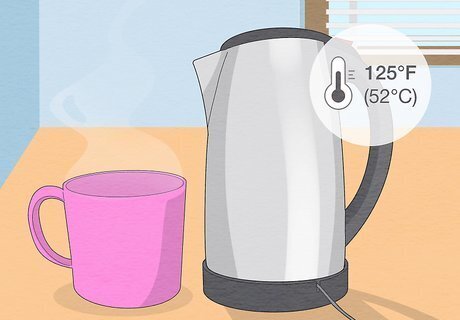
Set your hot water heater to 125 °F (52 °C) or lower. Your tap water can get dangerously hot. To prevent hot water burns, keep the temperature under 125 °F (52 °C). Small children have extra-sensitive skin and can get scalded more easily than adults. If you’re bathing a child, keep the water temperature in the bath between 98.6 °F (37.0 °C) and 100.4 °F (38.0 °C).
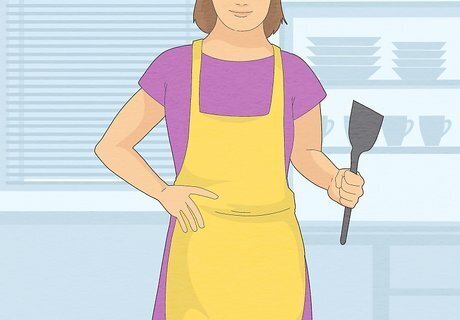
Avoid wearing loose clothing while cooking. Loose sleeves can snag on cookware handles and create a greater risk for spills and burns. When you’re using the stove, wear snug or short-sleeved tops, or roll your sleeves up.
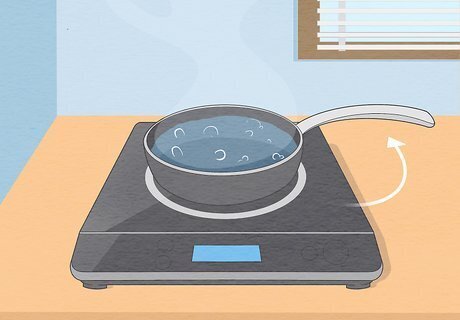
Turn pot handles inward when cooking. Spills and burns can happen when you accidentally jostle or snag the handle of a pot or pan full of hot liquid. To prevent this, turn your cookware so the handles face away from the edge of the stove.
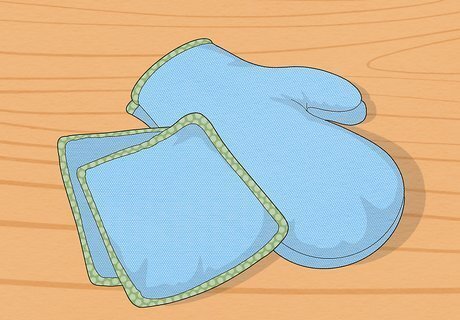
Use dry potholders or oven mitts when handling hot cookware. A damp potholder or oven mitt will heat up much more quickly than a dry one, putting you at risk for scalds and burns. Feel your mitts or potholders before using them to make sure they are completely dry.
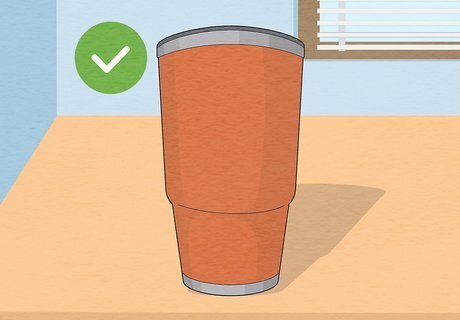
Put hot drinks in covered travel mugs. Open drink containers are easier to spill. Put hot drinks in closed containers, especially if there are small children around. It’s also a good idea to use closed containers in moving vehicles or when you’re trying to carry several things at once (such as a hot coffee and your groceries). Keep the lid closed securely between sips.

Be careful when removing lids from containers of hot liquid. Steam is even hotter than hot water, and it can quickly and easily cause serious burns. Put on an oven mitt or cover your hand with a dry kitchen towel, and remove lids from containers of hot water slowly and carefully.
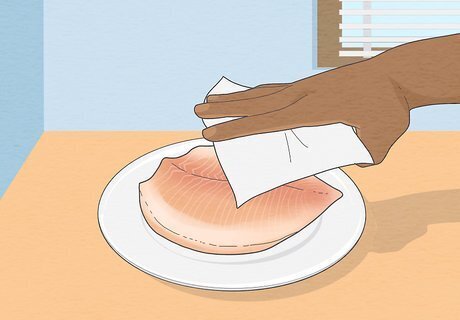
Avoid mixing water and hot oil. Putting water or wet food into hot oil can cause the oil to splatter, which may lead to severe burns if it splashes on your skin. Never put wet or frozen foods into hot oil. If you want to deep-fry something that’s damp, pat it dry with a paper towel before adding it to the oil.


















Comments
0 comment